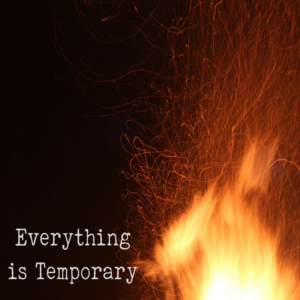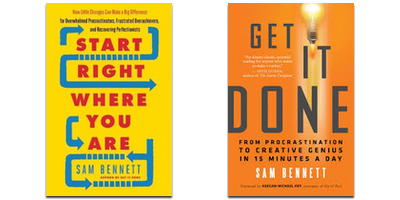


but what if the opposite is true?
What if the opposite is true?
This is a question I ask myself all the time.
For example, you say, “Oh, I don’t have time to write a book.”
What if the opposite is true ?
What if the truth is, “I don’t have time to NOT write a book.”
In other words –
Life is fleeting. The future is uncertain. You can’t afford the luxury of believing that you will have a chance to write this book in the future — you MUST write this book right now.
Interesting, huh?
Or maybe you say, “Everyone is already writing a book.”
When the truth (the opposite) is, “No one is writing my book.”
Or you say, “I don’t know how to write a book.”
When the truth (the opposite) is, “I know enough to start. And I know enough to get help and guidance.”
Speaking of which, I’m putting together a small group of smart people who want to write a GOOD book for a day-long event that will end with you having:
🧐 Perfect Clarity on which book you are actually writing (style, structure, genre, format)
🤓 A Solid Decision about which publishing path is right for you (self-, hybrid, or traditional)
😎 Created a joyful, workable plan for you to get the whole thing done by the end of April. F’reals.
This is a small-group, heavily interactive, online event.
This is a small-group, heavily interactive, online event.
Let’s do this thing.
If you are interested in finding out more, please write me back and we’ll see what’s what.
No pressure.
No sales.
And, actually, it really helps me to hear directly from you what you’re up to, so you’d be doing me a favor.
If you are thinking now, “I don’t think this offer is for me….”
I encourage you to consider:
What if the opposite is true?
What if this offer is the absolutely most perfect thing you could do to bring your book to life in 2025?
Happy New Year!
P.S. This year alone I’ve helped dozens of writers get their books and book proposals out into the world in a fun, holistic, gentle, and creative way.
Oh, and I also wrote and published my own award-winning book. I think it would be fun to work with you, too : ) – S.

Your Hot Pink Octopus – ?
OK, look – I didn’t want to be the first one to mention it….
but you’ve got a Hot Pink Octopus
and it’s wrapped all around you.
You can’t get away from her.
You can pry off one arm, but she’ll wrap it somewhere else.
Maybe somewhere that tickles.
You can try to hide from her…..
but you know a 600-lb Hot Pink Octopus can fit through a hole the size of a quarter…
so she follows wherever you go.
She’s been with you forever.
She’s your creativity.
She’s your stories.
She’s the uncanny sense that you have been put on this earth in this
incarnation to
share your words
share your vision
share your voice
She’s the part of you that knows better than you —
and the less you try and manhandle her, the better.
Babe, you were put here to share your octopus.
And when you share her,
and people love her or don’t,
you can know that it’s not You that they love or don’t,
it’s your Hot Pink Octopus.
Your Hot Pink Octopus might even win awards
or make you a fortune
or connect you with other Cephalopods
And together, you can do great things.
Quit fighting her.
Quit trying to ignore her.
Quit pretending like she doesn’t matter,
or that you can only make time for her once everything else gets done,
which never happens.
The world needs your Hot Pink Octopus:
Her shape-shifting wisdom…
Her gift of camouflage…
Her endless curiousity….
Her remarkable ability to adapt and learn…
She’s been on this planet for almost 200 million years.
Let her speak.
Myth Buster: You don’t need a GOOD IDEA to write a good book
| Hi Charlynn –
Sweetheart, I think you know in your heart that there is no such thing as a “good” idea or a “bad” idea.
There are only IDEAS.
And the ideas that occur to you are so special –
Because they are yours alone. It’s all been said before….but not by you.
I mean, if I told you that I had an idea about a postage stamp artist and a postcard artist who have a mysterious love affair and the whole book is made of removable, readable letters between them — oh, and it’s a trilogy….
You might scoff, but the 90s sensation Griffin and Sabine series have sold over 5 million copies worldwide.
Or what about the innovative Choose Your Own Adventure Books?
Those have sold —
wait for it —
250 million copies.
(Oh, and I happen to be friends with the editor of those books. She’s awesome. #hairtosshairtoss #iknowthecoolestpeople)
What about a poorly-reviewed, self-published series of erotic novels loosely inspired by Twilight fan-fic that set a record in the UK for best-selling paperback fiction book of all time? The 50 Shades series has earned over HALF A BILLION DOLLARS in book sales alone.
Not to mention the movies, merchandise, etc….
I mean.
Seriously.
You cannot judge a book idea before you write it.
And – take it from me – sometimes you can’t even judge it even after you write it.
(I was so convinced that The 15 Minute Method was a terrible idea that I actually looked into cancelling my contract with the publisher. #truestory)
So quit asking yourself this unanswerable question. And quit letting that question keep you from writing.
If you would like to share some about your book idea with me in a small group (no sales – just wisdom and mutual support) – please find a time here.
By the way I’m offering Figure Your Book Out In One Day AND Super-Secret Book Writing Club starting in early Jan — if you’re interested in more info, please email me back here. – S.
P.S. And if you DO NOT want to hear any more about book writing, you can opt out of this 21-day series about the creative and professional process of book writing and still stay on our regular list by clicking here and we’ll take care of it within 24 business hours, OK? Thanks. – S.
|
|
| The Organized Artist Company 800 Village Walk #138 Guilford, Connecticut 06437 United States (805) 881-3699 |

Everything is Temporary
The sky is orange and the air is heavy with smoke.
There is a brush fire burning in Ojai/Ventura – right now – about 20 miles from my home.
Houses burnt to the ground.
Habitats destroyed.
People and animals displaced.
Normally I wouldn’t try and email you in the middle of a crisis.
But we know that “crisis” contains both danger and opportunity.
So I thought we might take the opportunity of this moment to dwell on a deep truth:
Everything Is Temporary.
And it was ever thus.
Everything is always falling away from us as we circle toward something else.
Mostly we hope for things to fall away gently, not be gone in the whoosh of a sudden fireball.
But we don’t always get to pick.
Your emotions, your belongings, your body, your thoughts and fears – in time they will all pass away
Take a moment right now and imagine that it’s 100 years from now. If you were to return to this spot, what might you see?
Will there be any trace of you?
A book in a library somewhere?
A child with your name or likeness?
A piece of art displayed?
A scrap of music?
A few words of inspiration?
It’s nice to think that the work I do today could ripple through time and still be of consequence a century from now.
And if it were 10 years from now?
What of yours will survive the decade?
What about just one year from now?
What would you like to see in 12 months, as you gaze around the landscape of your life?
What will have been burned away? What will be new?
Will your dreams be still unrealized?
Or will you have created something that lasts?
I know that you are being called to create something that will still be having an impact 1 or 10 or 100 or 1000 years from now.
And I won’t accept any excuses.
You have wonderful ideas and a willing heart – all you need is some structure and support to create a workable plan.
Here’s a BRAND NEW offering:
You’re especially invited to join me for a live, highly interactive (via Zoom) workshop
Your Clear Year: 2018
Sat.Dec. 9
10am-1pm PT/1pm-4pm ET/6pm-9pm GMT/5am-8am + 1 day AEDT
—-> just $97 ($497 value) INCLUDES a full year of membership in 365 Club
Can’t be there live? Register anyway and get the recording – no worries.
Satisfaction Guaranteed or Your Tuition Cheerfully Refunded.
NOTE: This is NOT your standard “goal-setting” workshop because, as I said, those annoy me.
“You rocked my mind set…you really get how our brain works!!! I was giving up on my dream of writing the 6 books I have titles for. I got my dream back today….Deep Thanks” – A.W.
I have devised a NEW, unusual, and highly-participatory creative process designed to get you to:
This is a live, interactive online event. You will need a good internet connection and an open mind.
—-> check it out here
Because the reminder that everything is temporary is also the reminder to take action now.
There is no better time than now.
Now is the only time there is.
P.S. In the past few years, I’ve had major surgery, written a few wildly successful books, lived with depression and anxiety, grown my business into the mid-six figures, and still found time to walk on the beach. I know something about how to be productive, even when life is getting in the way. Join me for this all-new live interactive video workshop – in which you will actually be DOING stuff (not just taking notes : ) and let’s have 2018 be the year that makes a difference, OK? – S.
P.P.S. Your Clear Year: 2018 also includes a full year of membership in the 365 Club, featuring a monthly “Ask Sam Anything” call, daily inspirational emails, a private FB page and access to the Library. So this isn’t just a one-off quickie – you’ll get a FULL YEAR of support from me and the team. – S.
P.P.P.S. If you are interested in helping, United Way of Ventura County is accepting donations via text by sending UWVC to 41444, online at www.vcunitedway.org, or by calling 805-485-6288. Also the Humane Society of Ventura County has taken in over 120 refugee animals, and I’m sure they would also welcome any assistance you can give. http://www.hsvc.org/. Thank you. – S.
By The Way, You Look Really Great Today

